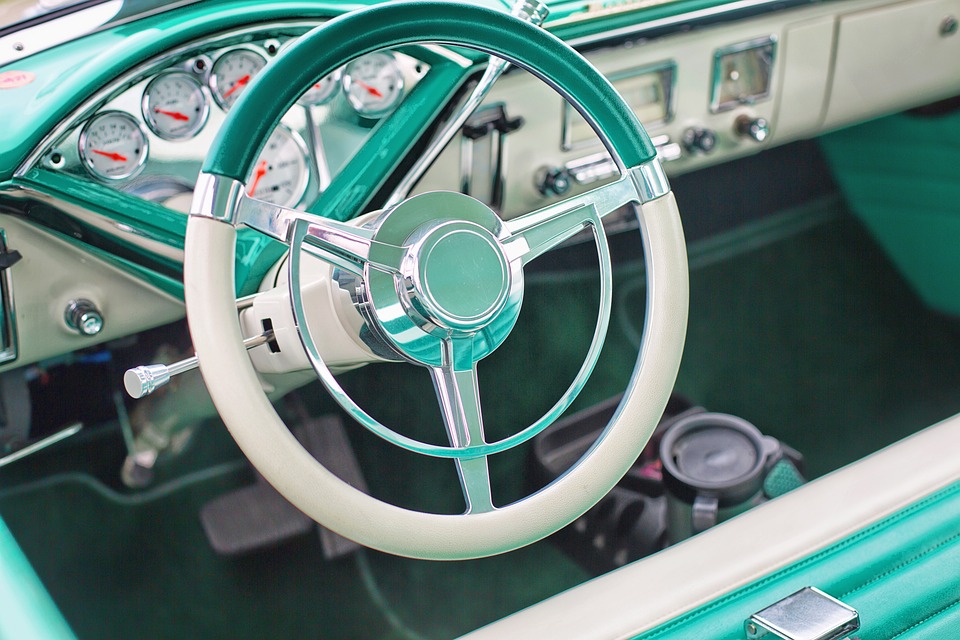If you’ve ever cast an envious glance at the aggressive aesthetics of the hood scoop on a Toyota Tacoma and wondered how you could make that cool feature functional, you’re in exactly the right place. This article is dedicated to car enthusiasts who seek not only to enhance the visual appeal of their vehicles but also to boost their performance. We understand the allure of transforming aesthetic elements into functional enhancements, and in this guide, we promise to deliver a comprehensive step-by-step process. By the time you’re done reading, you’ll be armed with all the necessary knowledge to turn that dormant hood scoop into a working marvel, enhancing both the look and efficiency of your Tacoma.
Having tinkered with cars and trucks since 2013, my team and I have accumulated over a decade of experience in the field, solving a myriad of car-related issues and figuring out how to make various automotive dreams come true. We’ve spent countless hours under hoods, and around Toyota Tacomas in particular, mastering the intricacies of their design and functionality. In my opinion, our journey through the world of automotive customization and repair has uniquely positioned us to provide authoritative and practical advice on making your Toyota Tacoma hood scoop functional. Drawing from our wealth of knowledge and passion for what we do, we’re excited to share our insights and help fellow enthusiasts embark on this exciting modification project.
How To Make Toyota Tacoma Hood Scoop Functional
## How To Make Toyota Tacoma Hood Scoop Functional: DIY Guide
Toyota Tacoma, a beacon of reliability and rugged charm in the truck world, often comes with an aesthetic hood scoop on several of its models. Though pleasing to the eye, this feature is originally non-functional, serving more as a visual accent rather than providing any performance enhancement. However, for those yearning to convert this dormant asset into a breathing, performance-boosting component, there exists a pathway. With a sprinkle of ingenuity and elbow grease, this guide will illuminate the steps to transform the decorative hood scoop of your Toyota Tacoma into a functional entity.
### Understanding the Basics of Airflow
Before diving into the toolbox, it’s paramount to grasp the essence of what you’re intending to achieve. The hood scoop, when operational, directs outside air directly into the engine’s intake manifold, essentially allowing the engine to ‘breathe’ cooler air. Cooler air holds more oxygen, which can enhance combustion efficacy and, consequently, improve overall performance and efficiency. This principle is the cornerstone of the project at hand and understanding this will guide your modifications with purpose and direction.
It’s not merely about cutting a hole and hoping for the best. Precision is key; ensuring that the modification enhances performance without compromising the integrity of your vehicle requires careful planning and execution. Our site, TruckingCareers.org, with over 10 years of expertise since 2013, underscores the importance of understanding the aerodynamics involved in making such modifications.
### Evaluating the Tacoma’s Hood Design
The Tacoma’s hood is designed with aesthetics at the forefront, and the scoop that sits proudly on it is no exception. To transition it from a merely decorative piece to a functional part of the vehicle’s performance apparatus requires a keen evaluation of its structure. Understanding the space beneath the hood—the clearance, the path to the intake, and potential obstructions—is essential.
This phase is the bedrock of your project, dictating the feasibility and guiding the specifics of your approach. For instance, the material composition of the hood could affect your tool choices and techniques. With an extensive background in the field, insights from TruckingCareers.org suggest that a thorough examination can mitigate the risk of costly mistakes during the actual modification process.
### Planning Your Modification Strategy
Armed with an understanding of airflow principles and a detailed evaluation of your Tacoma’s hood, laying out a plan becomes your next step. Detail your approach with precision; decide whether you’ll be creating a direct path to the air intake or if a more intricate design is necessary. This stage might involve sketching diagrams or consulting with experts to ensure feasibility and efficiency.
Materials selection is crucial here; opting for high-quality items ensures durability and longevity of your modification. Whether it’s the type of saw for the initial incision or the material used to refine and beautify the edges, each choice should be measured against its contribution to both performance and aesthetics.
### The Right Tools for the Job
Embarking on this modification without the right tools is akin to setting sail without a compass. You’ll need basic mechanical tools, a high-powered drill, saws capable of cutting through your hood’s material, and possibly a rivet gun or welder depending on your attachment method. Furthermore, precision tools like measuring tapes and markers are indispensable for ensuring that your cuts are accurate and your vents are aligned.
Safety gear cannot be overstated; protective eyewear, gloves, and even a respirator mask can be necessary precautions to prevent injury. TruckingCareers.org has always advocated for prioritizing safety, especially in DIY projects of this nature. Remember, preparing your workspace and organizing your tools can significantly streamline the process, making it more enjoyable and less fraught with potential setbacks.
### Cutting and Installing the Vent
The execution phase, cutting, must be approached with patience and precision. Mark your measurements clearly, double-checking against your plans. The actual cut should be done steadily, ensuring not to deviate from your guidelines. After cutting, filing down any sharp edges is crucial for both safety and aesthetics.
Installing the vent or creating a channel for the air to flow to the intake involves careful alignment and secure attachment. Whether you opt for bolting, riveting, or welding, ensure the seal is tight to prevent any leaks or vibrations. This step might also include installing filters or screens to prevent debris from entering the engine intake, a balance between airflow and protection that cannot be overlooked.
### Testing and Tweaking
After installation, testing becomes imperative. Observing how the modification affects your Tacoma’s performance can be exhilarating, yet it’s vital to approach this phase with a critical eye. Look for signs of improvement in engine responsiveness or efficiency, but also be vigilant for any unintended consequences, like increased noise or potential water ingress.
Adjustments may be necessary, and this is no cause for despair. Fine-tuning is a part of the process, and sometimes, iterative improvements are required to reach the optimal balance of form and function. This is where DIY projects truly shine, in the ability to customize and refine based on real-world performance feedback.
### Maintaining Your Functional Hood Scoop
Maintenance is the final, oft-overlooked phase. A functional hood scoop, now part of your Tacoma’s breathing apparatus, requires regular checks to ensure it remains clear of debris and operational. Depending on the environment you drive in, more frequent cleaning may be necessary to uphold its function.
Moreover, inspect the integrity of the modification periodically. The forces at play, from air pressure to vibration, can induce wear over time. Promptly addressing any signs of degradation not only prolongs the life of your modification but also ensures the continued performance and safety of your vehicle.
Transforming the decorative hood scoop of your Toyota Tacoma into a functional feature is a rewarding project that melds the realms of aesthetic appeal and mechanical performance. With careful planning, precise execution, and diligent maintenance, this endeavor not only amplifies the character of your Tacoma but also enhances its driving experience. Let this guide illuminate your path, infusing your project with the wisdom amassed from over a decade of automobile and trucking expertise at TruckingCareers.org. Happy modding!
FAQs on How To Make Toyota Tacoma Hood Scoop Functional
### FAQs on How To Make Toyota Tacoma Hood Scoop Functional
**Q: Can I make the factory hood scoop on my Toyota Tacoma functional?**
A: Yes, you can modify the scoop to become functional with the right tools and parts.
**Q: What tools do I need to make the Tacoma hood scoop functional?**
A: Basic tools such as a drill, saw, sandpaper, and possibly a rivet gun, depending on your method.
**Q: Do I need to buy a new hood to make the scoop functional?**
A: No, you can modify the existing hood, but aftermarket options are also available.
**Q: Will making the hood scoop functional improve performance?**
A: It can improve engine cooling and potentially enhance performance slightly if done correctly.
**Q: Is there a risk of engine damage by making the hood scoop functional?**
A: If improperly done, it can allow water and debris into the engine bay, risking damage.
**Q: Do I need a professional to make my Tacoma hood scoop functional?**
A: While not necessary, a professional can ensure it’s done correctly and safely.
**Q: How do I prevent water from entering the engine bay through the functional scoop?**
A: Install a water diversion system or choose a design that minimizes direct water entry.
**Q: Can making the hood scoop functional void my warranty?**
A: It can, depending on your warranty terms and the extent of modifications.
**Q: Are there pre-made kits to make the Tacoma hood scoop functional?**
A: Yes, there are aftermarket kits available specifically designed for this purpose.
**Q: How long does it take to make the hood scoop functional?**
A: Depending on your skill level, it can take a few hours to a couple of days.
**Q: Will making the scoop functional affect my Tacoma’s resale value?**
A: It could, positively if done well or negatively if perceived as a risk to engine integrity.
**Q: Can I revert the changes if I decide I don’t want a functional scoop anymore?**
A: Yes, but it may require professional help depending on how extensive the modifications were.




